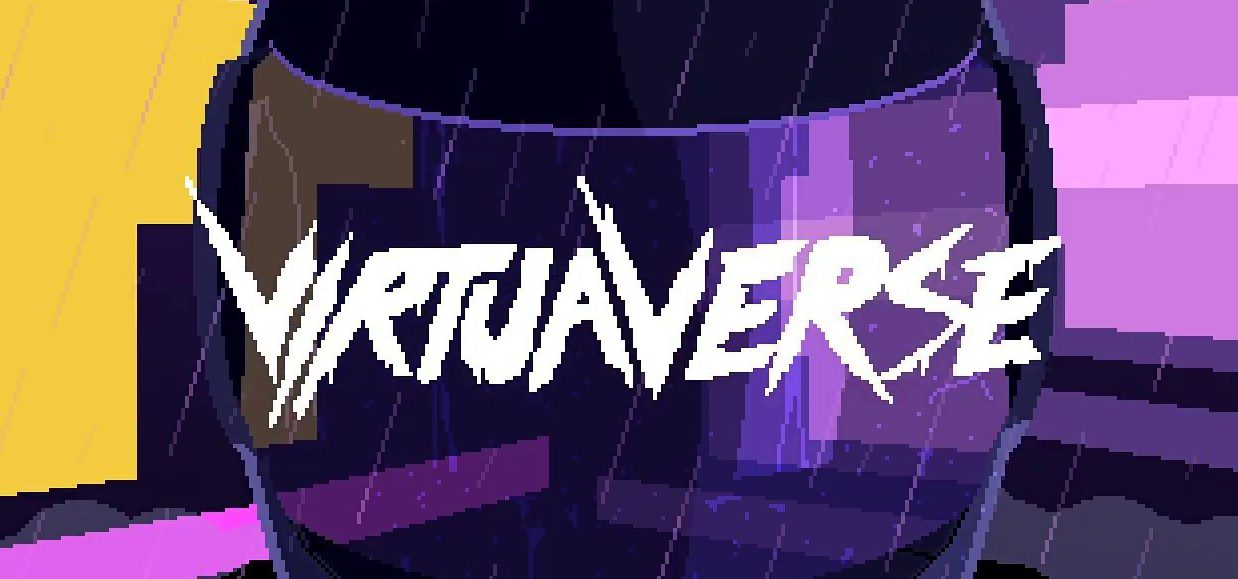A cyberpunk point-and-click game about hackers, virtual reality, and jackets with infinite space inside them.
Type: Single-player
Genre: Adventure, Point-and-Click
Developer: Theta Division
Publisher: Blood Music
Release date: 12 May, 2020


The Premise
Augmented and virtual reality have slowly been taking over the world. The real world that is. However, in VirtuaVerse, we are many years in the future, where AR and VR are already part of the everyday life, and mankind can’t live without it. What could possibly go wrong? Well, VirtuaVerse tries to show us a glimpse of such future. A good topic to base the plot around. But how good is the execution?
Story
The story starts us off in what appears to be a typical cyberpunk city. The all too familiar elements show up straight away – neon signs full of advertisements, rainy streets, abandoned alleys and ghettos, hackers, and nightclubs. The first half or so of the story has our character looking for his girlfriend who mysteriously left in the middle of the night and left behind only a strange message.
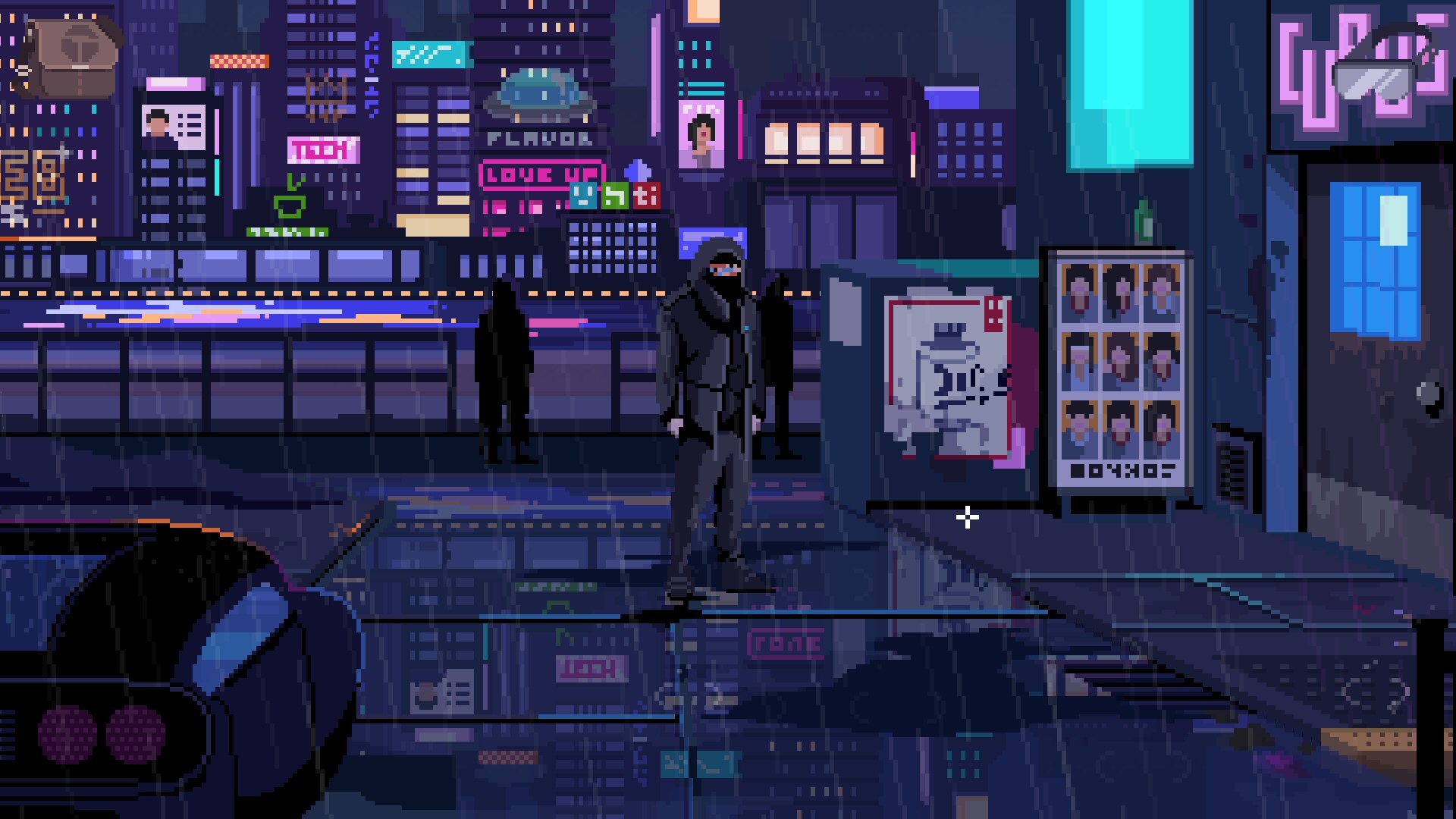
The story only really picks up in the second half of the game, and even then it feels too stereotypical and kind of barebones, going with the old sci-fi trope of hackers rebelling against the system, with said system apparently being greedy and oppressive, even though we never see any examples in the game to justify such a view. In fact, most times we just learn what’s going on through opinions of the main character, so there’s not much showing and a lot more telling.
When looking at the characters, the main character and most of the other major characters felt kind of 2-dimensional. Anything about their backstories or motivations is quickly brushed over and not explored in depth. They are just merely filling a specific role and that’s it, and it’s hard to relate to or care for any of them. The main character doesn’t even exhibit any kind of reaction when his actions get someone killed. Strangely enough, the minor NPCs appeared to have a lot more of a personality and acted more like real people with real motivations.
This brings me to the world-building, which is a bit of a mixed bag. On the one hand the setting is as stereotypical as cyberpunk settings get, the kind of setting we’ve seen a thousand times before, but on the other hand it has some interesting bits sprinkled here and there, such as the hardware heap desert area, which was probably the most thematically interesting area in the game. Overall it felt like various concepts, tropes, and memes were just mixed together into one setting, with some of them working well together and others not.
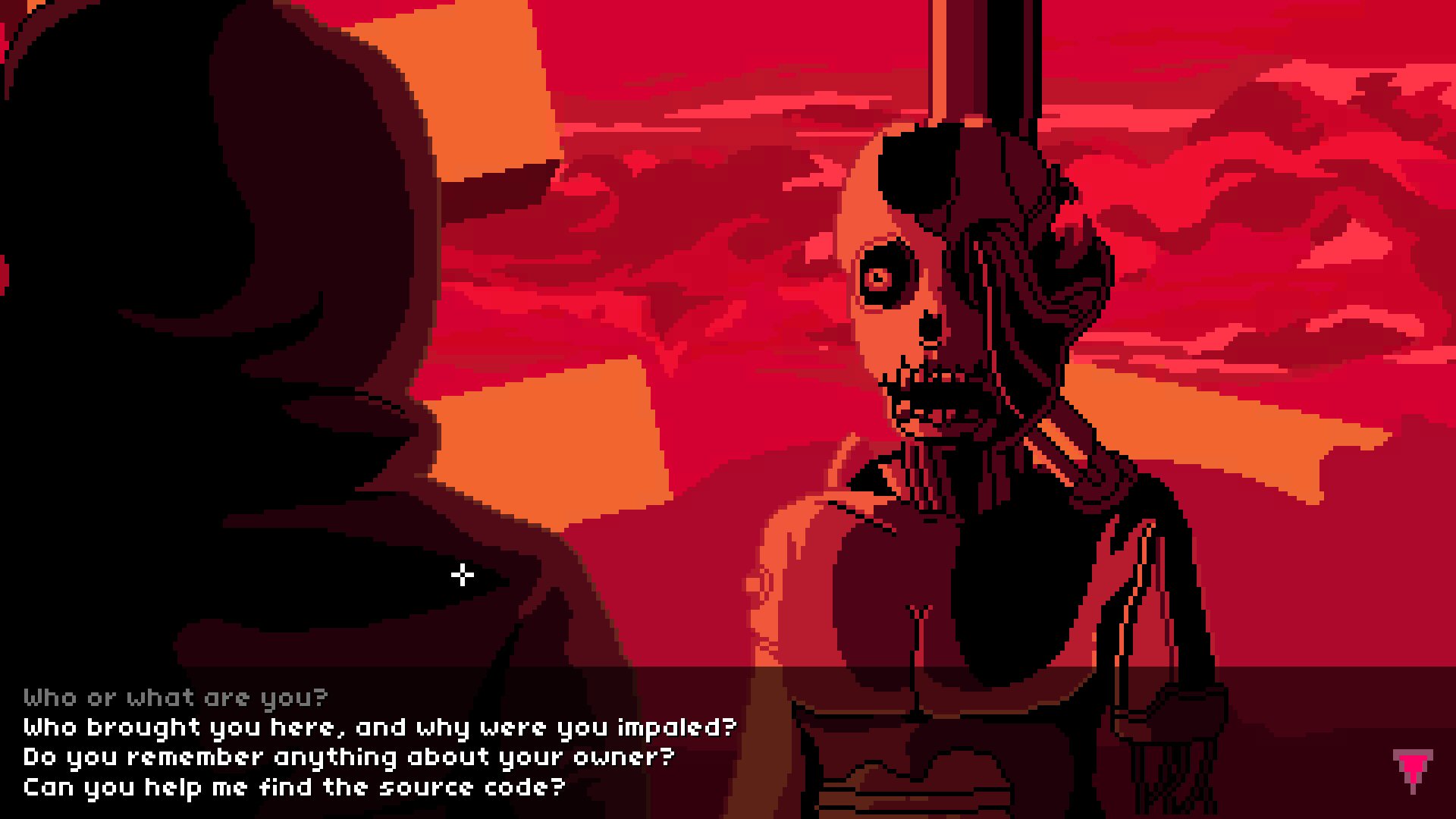
Gameplay
The gameplay is mainly point-and-click with various puzzles that we need to solve in order to make progress. We can interact with parts of the environment and either just ‘look at’ them or ‘use’ them, which is similar to most point-and-click games. We also have an inventory where we keep all the items that we pick up during the game. That inventory ends up getting full of many items, some of which we never use (maybe some are there just to mislead us). Main character’s jacket sure can fit a lot in it, including a broom, a big ladder, a computer monitor, and so on.
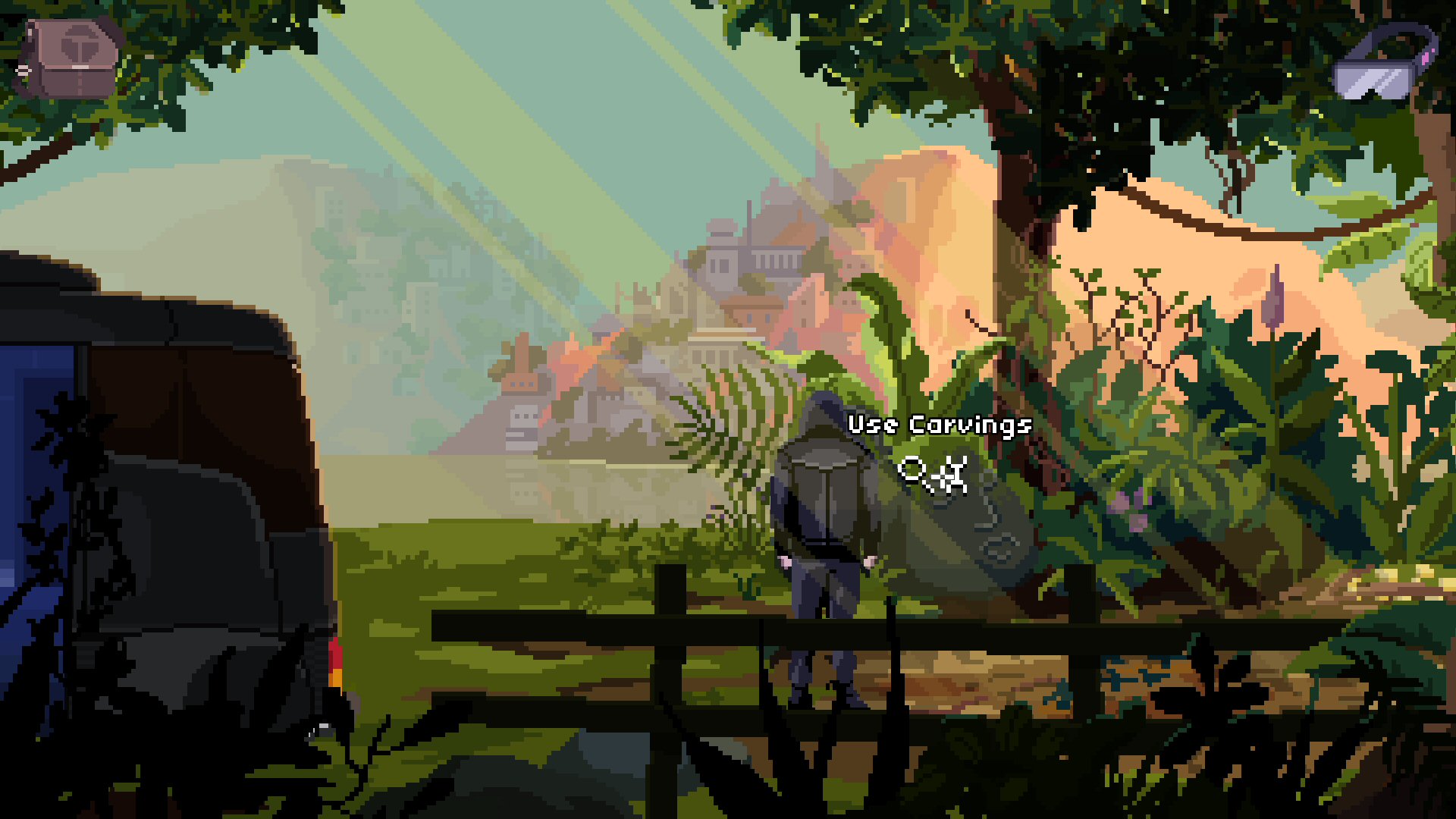
Now, please be warned, a rant incoming…
Some of the puzzles in the game were interesting and intuitive, such as in the aforementioned hardware heap desert area and some of the puzzles in the final few stages, but the game is also filled with many puzzles which had nonsense logic and made you go ‘are you serious?’ after you found out the correct solution (whether by sheer experimentation or after looking up in a walkthrough). Some of the solutions were actions that in the real world would be totally random and unlikely and involve events that aren’t related at all. I’ll refrain from giving too much detail in the examples so not to spoil the game, but I’ll mention a few of them in brief.
In one part of the game, causing a dog and a cat in the area to chase one another and fight along the street and inside buildings helped you to get rid of one of the NPCs that was nowhere near them but which was preventing you from progressing forward.
Some of the time the game expected you to return to the previous areas that you visited earlier, but it’s never clear you had to do this. Those would involve new dialogues popping up with some NPCs from the older areas. Most likely you’d uncover these new dialogues by trial and error rather than by any clear logical paths. The same also occurred when we had to do pixel hunts in some parts. Pixel hunts more often than not are an annoyance in these types of games, and to execute them well is hard. In this game you’re never made aware when such pixel hunt occurs and even what it is you need to be looking for. The game expects you to just randomly click on everything and to come across these things by accident. And these pixel hunts not only require you to click randomly, but to use a specific item from your inventory and to click randomly while holding that.
In this game, solutions to most puzzles would require you to think of the most unlikely scenario for a solution, and I bet you, the real solution in the game will be even more unlikely than the one you thought of. It’s the kind of game where you order a pizza in order to gain access to someplace that’s off-limits, or where your character has to watch a cartoon so to get access to a gadget that you need, or being expected to know something about a specific star constellation. There are also instances where you have to ‘look at’ someone’s clothes in order to unlock a new dialogue option with them that helps you progress forward. In another such instance we have to do this with the chair someone is sitting on. Who could’ve thought that making small talk about a person’s clothes or chair will magically lead the conversation to where it helps you make progress in the game? In some parts you need to exhaust certain seemingly random dialogue options first before the one you want actually appears.
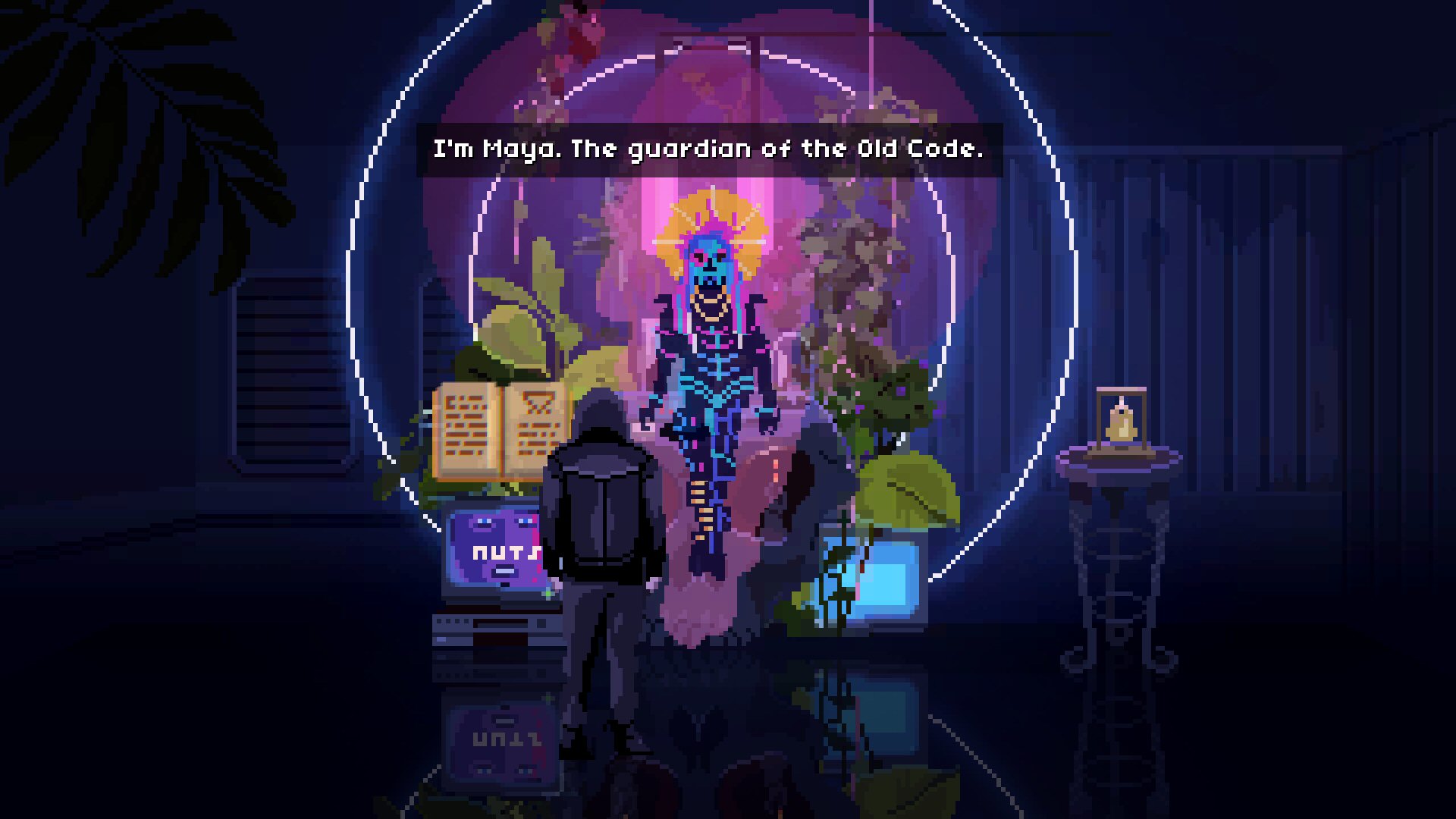
These things also need to be done in a certain sequential order. If you try to solve something earlier than the game wants you to, the option will simply not appear until you’ve done something else in the area first, even though there’s no reason why the other event should gate off the one you’re trying to solve.
Might I add, all this is coupled with the character’s slow walking speed. The game does not provide us with the option to move faster or instantly to where we want by double-clicking, as some other point-and-click games allow us. This makes the whole affair feel like a real drag. It discourages you from exploring and trying things out, because the chances are, the most logical solutions that you think should work aren’t programmed in the game and you’ll just be wasting your time walking back and forth around the area. And even those that are correct, you need to do them in the correct order and not any earlier.
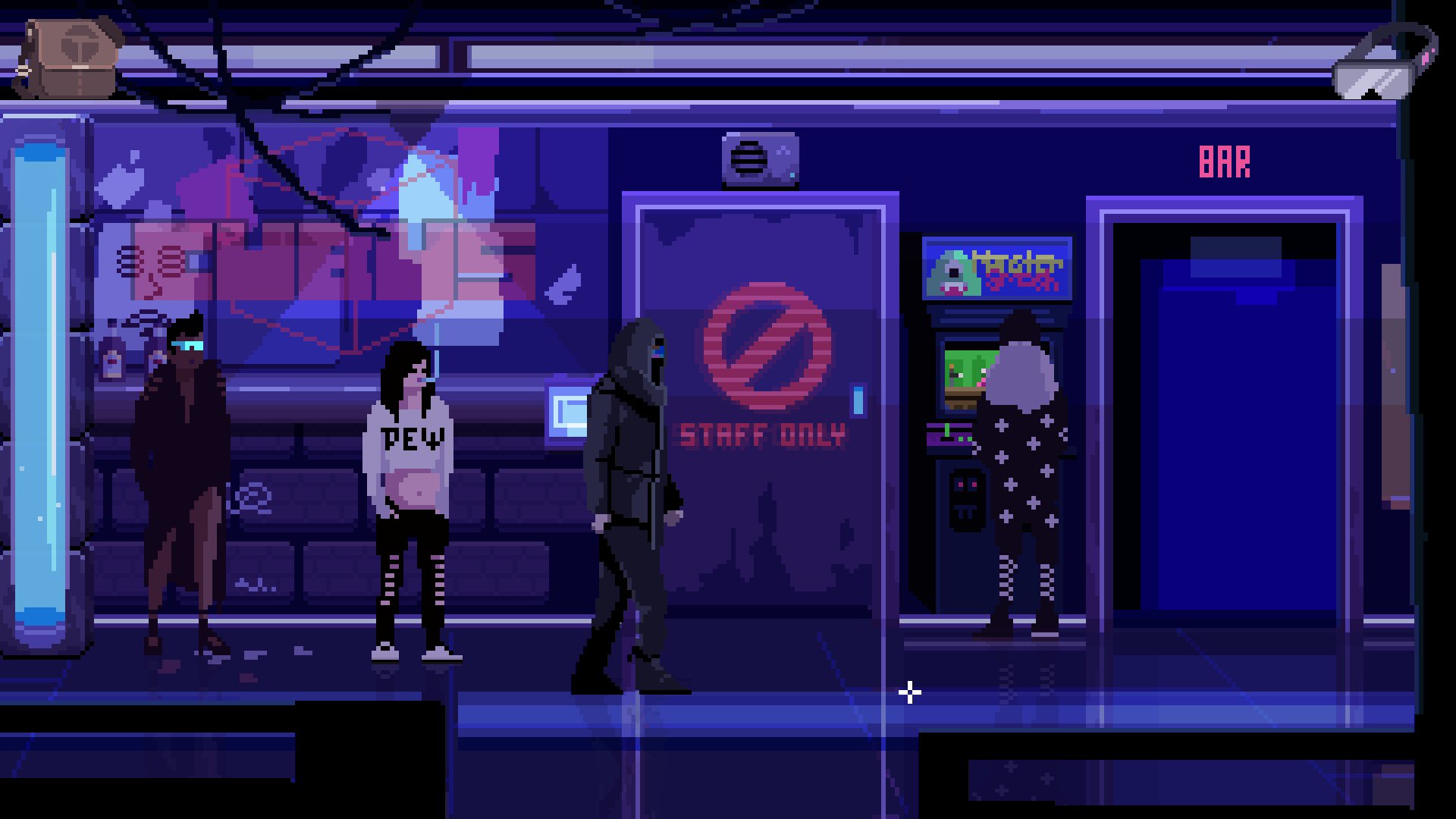
Lastly to mention, some of these puzzles aren’t even that interesting. Some can be immersion-breaking because of this. So, I’m on a mission to save the world and the thing that prevents me from making the next step of the progress is that I need to re-decorate some kind of an action figure from a Happy Meal box?
It’s even more disappointing that when I was looking through the game’s forums on Steam, despite many fans offering feedback and critique about these puzzles, the devs were simply dismissing it and saying that they’ll make the puzzles in the next game even harder because of people’s moaning. It’s disappointing to see the devs not taking fan feedback on board unless it’s positive. I understand that devs have to follow their vision, but fan feedback is also important, where even the people who greatly enjoyed the game have voiced a dislike for some of the puzzles. This is starting to feel like the point-and-click version of a ‘git gud’ reply, which is not helpful to anyone. ‘Hard’ does not always equal ‘intelligent’ and ‘well-designed’. Providing some needed info to the player does not instantly equal to hand-holding. A well-designed puzzle makes it crystal clear to the player what their goal is and the kind of rules by which the game operates, so that the players can use this knowledge to find the solution and to find the whole process to be rewarding, to know that there was no luck and trial and error involved, and to not feel cheated that the game withheld something from them and expected them to read the dev’s mind for a very specific and unlikely solution.
Presentation
The visuals is the one area that I have to say I loved fully and have nothing to criticise. The pixel art in the game is gorgeous, both regarding the colourful environments, and also the character designs and their animations. The use of colour themes and finer details makes each area look distinct and different to the other areas. The inventory items and various UI pieces also all look good.
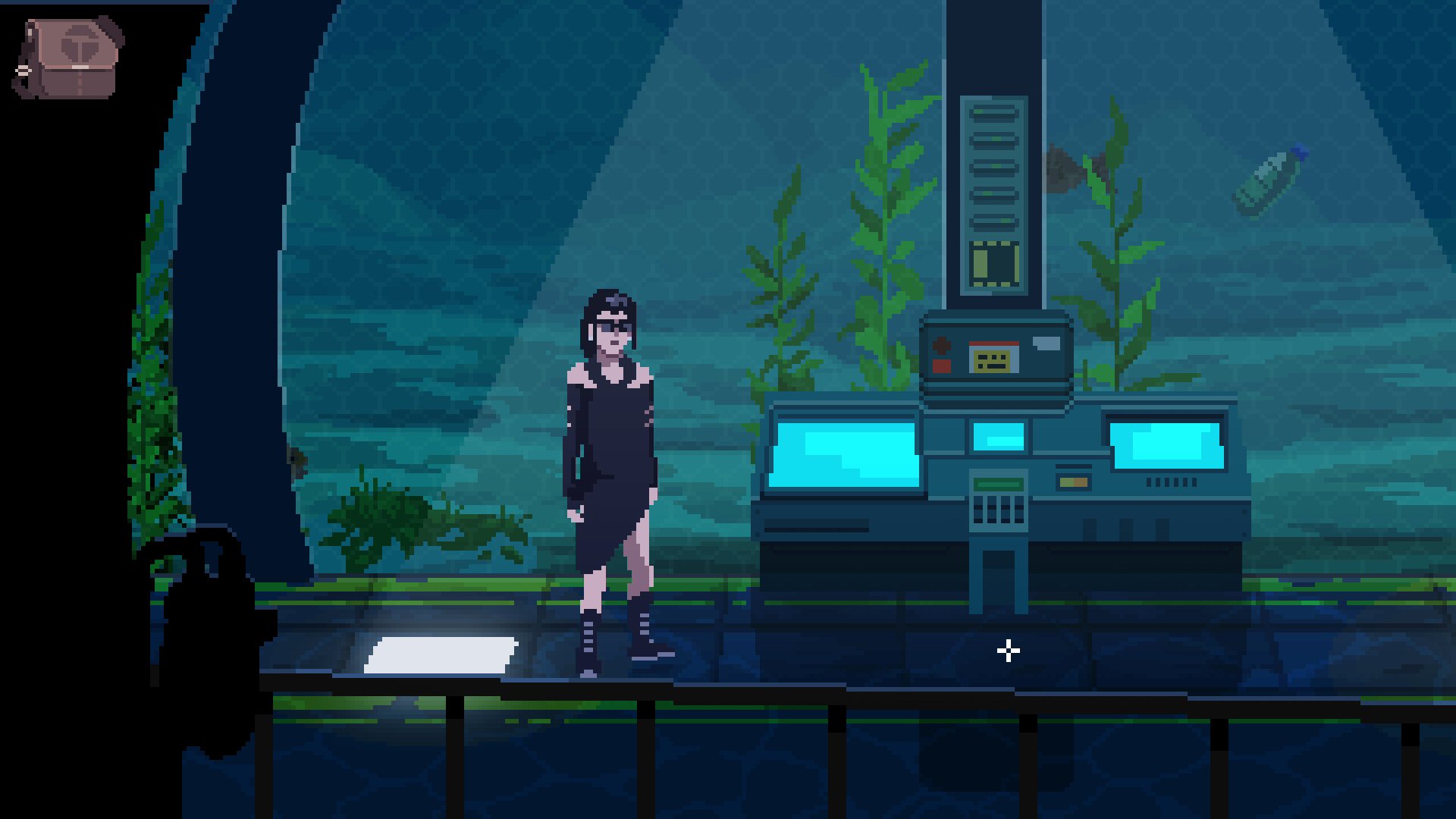
I wasn’t too fond of how the dialogue was presented in text boxes though. It was at times hard to tell who was saying a particular line, because the textbox and font was just the same for each character. No colour-coding and no name tags above each textbox to let us know who is talking. It might’ve been ok if the game had voice acting, but with all text needing to be read, some distinction between lines of each character would’ve been helpful and more immersive.
The music is also generally nice. I didn’t find it to be particularly memorable, but most tunes were nice and suited each area fine, as well as the game as a whole with its retro synthwave feel. Although I wish the music played more of a part in scene setting and such. For the most part you just had a single track playing throughout the entire area regardless of what was going on, and I think it would’ve been better if the music changed more often to fit the emotion and events of the scene better.
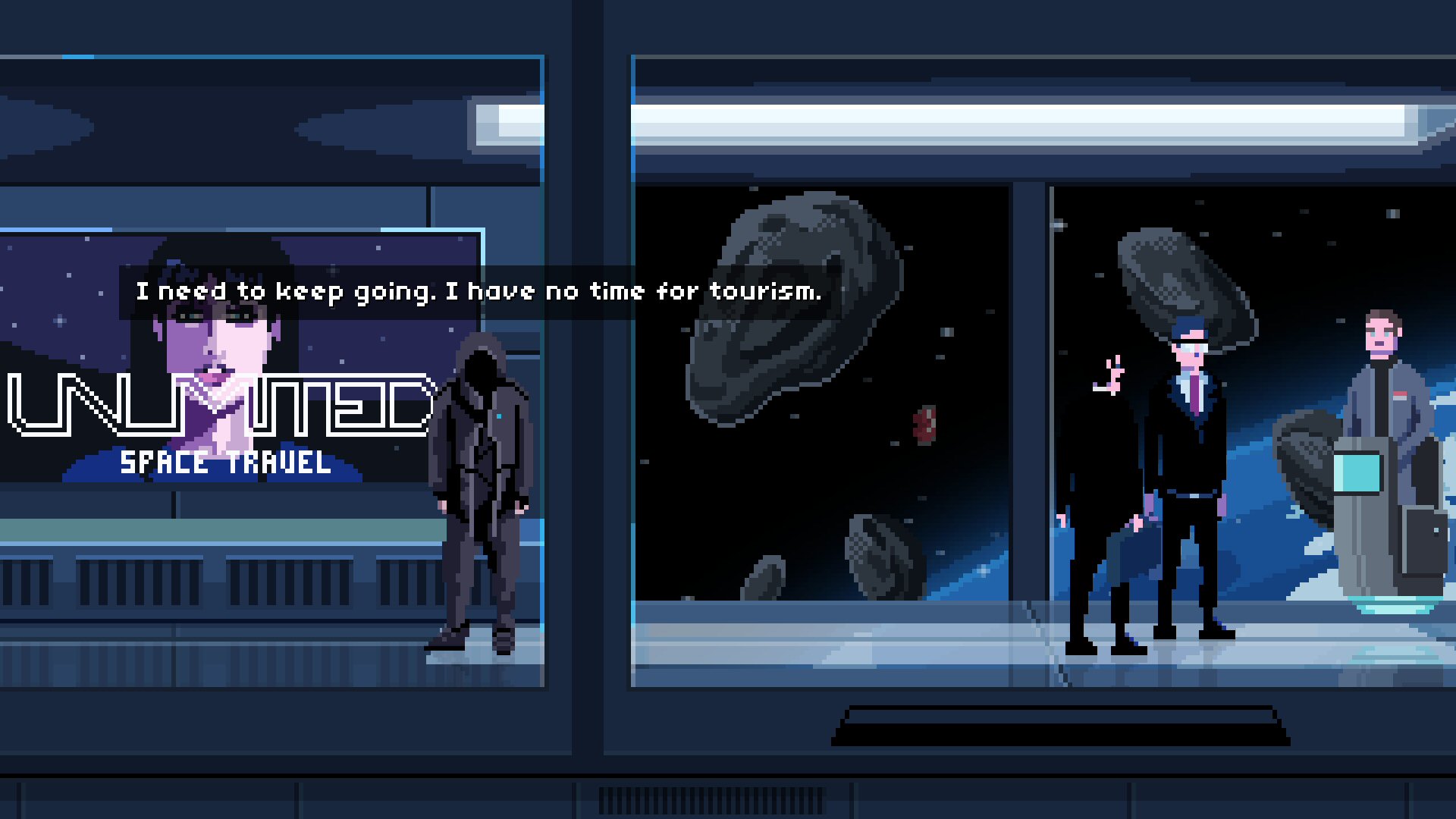
Verdict
Sci-fi cyberpunk setting and pixel art visuals were the two things that grabbed my interest and got me to try VirtuaVerse. I really wanted to enjoy this game, but in the end, the game left me quite disappointed. It’s got a nice level of presentation with its beautiful visuals and nice synthwave music, but everything else feels really flawed. It’s not a bad game; just quite disappointing and misses its potential, in my opinion.
Most times the gameplay and the story didn’t connect well enough. There was little incentive to solve the puzzles, because there was not much of a story, especially in the first half. I did not feel any kind of emotional connection to any of the major characters and what their fate would be. And with many of the puzzles having such obscure and strange solutions, I felt like I was forcing myself to keep going for most of the game. If the story was at least more captivating, it would’ve been easier to look past the annoying puzzles.
I feel bad to make this review so critical when the game was developed by a small indie team of just 3 people who made the product of their passion. I usually have a soft spot for teams like that, but I can’t in good faith recommend this game, unless you are in a very niche audience that doesn’t mind if the plot is so-so and likes obscure puzzles. I do wish these devs will continue making more games and hopefully implementing some of the feedback from fans, and hopefully their next game will feel more rewarding in the story and gameplay aspects, because they definitely have talents and potential from what we see in this game.

